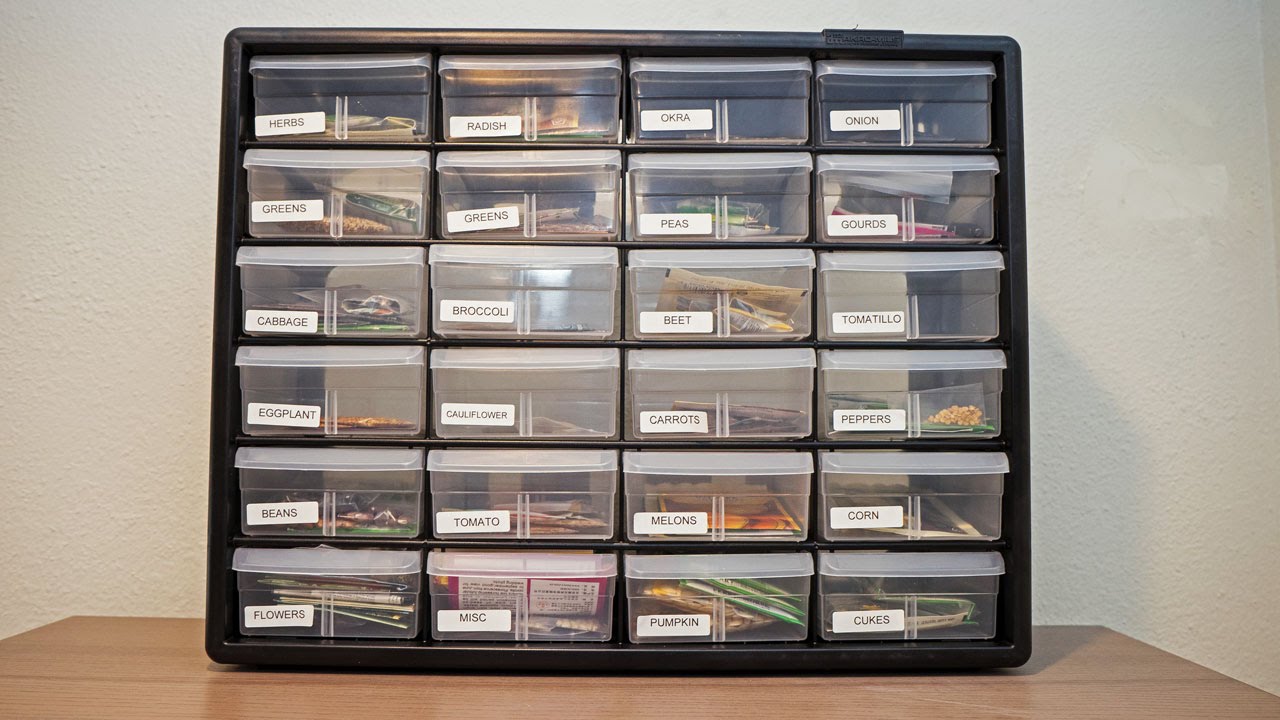

Articles
How To Store Vegetable Seeds Long Term
Modified: January 24, 2024
Learn how to store vegetable seeds for the long term with our informative articles. Find out the best methods to preserve and maintain the viability of your seeds.
(Many of the links in this article redirect to a specific reviewed product. Your purchase of these products through affiliate links helps to generate commission for Storables.com, at no extra cost. Learn more)
Introduction
Storing vegetable seeds long term is an essential practice for gardeners and farmers alike. By preserving seeds properly, you ensure a constant supply of high-quality seeds for future planting seasons. This not only saves money but also ensures the continuity and sustainability of your gardening efforts.
Seed storage involves protecting seeds from moisture, light, and fluctuations in temperature, which can all degrade their viability over time. By following the right methods and techniques, you can extend the shelf life of your vegetable seeds and increase the chances of successful germination when you decide to plant them.
In this article, we will explore the importance of long-term seed storage, factors that affect seed viability, selecting the right seeds for storage, harvesting and preparing seeds for storage, choosing appropriate storage containers, creating optimal storage conditions, monitoring seed viability, conducting seed viability testing, and important tips for successful long-term seed storage.
By the end of this article, you will have a comprehensive understanding of how to store vegetable seeds long term and ensure a reliable supply of seeds for your gardening needs.
Key Takeaways:
- Preserve your vegetable seeds long term to save money, ensure a consistent supply, and contribute to biodiversity, self-sufficiency, and emergency preparedness. Proper storage, testing, and rotation are key for success.
- Select high-quality, open-pollinated seeds adapted to your climate, and store them in airtight, light-resistant containers in a cool, dark, and well-ventilated environment. Regular testing and rejuvenation techniques help maintain seed viability over time.
Read more: How To Store Eggplant Long Term
Why Store Vegetable Seeds Long Term?
Storing vegetable seeds long term is beneficial for several reasons. Let’s explore why this practice is essential for gardeners and farmers:
- Cost Savings: Purchasing fresh seeds each year can be costly. By storing seeds long term, you can save money by avoiding the need to buy new seeds every planting season.
- Seed Availability: Storing seeds allows you to have a consistent supply of seeds, ensuring that you have access to the specific varieties and cultivars you prefer, even if they are not readily available in the market.
- Biodiversity Preservation: Storing heirloom or open-pollinated seeds helps preserve biodiversity by ensuring the survival of unique plant varieties. This is particularly important in the face of shrinking genetic diversity in commercial seed catalogs.
- Self-Sufficiency: Storing seeds enables you to become more self-sufficient by reducing dependence on seed suppliers. You can rely on your stored seeds to start new plantings, even in situations where access to seed sources may be limited.
- Emergency Preparedness: In times of crisis or unexpected events, having a stockpile of long-term stored seeds can be invaluable. Whether it’s a natural disaster or a disruption in the supply chain, you’ll have the means to feed yourself and your family by growing your own food.
- Genetic Adaptation: Through long-term seed storage, you have the opportunity to select and save seeds from plants that have performed exceptionally well in your specific growing conditions. Over time, these seeds adapt to your local environment, resulting in improved crop performance.
By storing vegetable seeds long term, you not only ensure a continuous supply of seeds but also contribute to sustainability, self-sufficiency, and the preservation of plant diversity. It is a valuable practice that empowers you as a gardener and farmer.
Factors Affecting Seed Storage Life
Several factors can influence the longevity and viability of stored vegetable seeds. Understanding these factors will help you take the necessary steps to preserve your seeds effectively. Let’s explore the key factors affecting seed storage life:
- Moisture: High humidity or direct exposure to moisture can cause seeds to rot or germinate prematurely. It is crucial to keep seeds dry during storage to maintain their viability. Moisture can also lead to the growth of mold or fungi, which can damage the seeds.
- Temperature: Excessive heat can accelerate seed deterioration, while freezing temperatures can also harm seeds. It is important to store seeds at a cool and consistent temperature, ideally around 40°F (4°C), to prolong their viability.
- Light: Exposure to light can negatively impact seed viability. Seeds should be stored in opaque containers or in a dark environment to protect them from the damaging effects of light.
- Air/Oxygen: Oxygen can accelerate seed aging and deterioration. Proper storage containers should provide airtight conditions to limit the exposure of seeds to oxygen.
- Seed Maturity: Seeds should be fully mature before harvesting for long-term storage. Prematurely harvested seeds may not have developed enough internal structures to ensure viability during storage.
- Seed Quality: The quality of the seeds at the time of storage can significantly impact their longevity. Using high-quality seeds that are disease-free and harvested from healthy plants increases the chances of successful storage.
- Seed Type: Different types of seeds have varying storage life. Some seeds, such as onions or leeks, have a shorter storage life compared to other vegetables like tomatoes or peppers. It is important to be aware of the specific requirements of each type of seed.
By considering and managing these factors, you can greatly extend the storage life of your vegetable seeds. Providing optimal conditions and protecting seeds from moisture, heat, light, and air will help preserve their viability for longer durations, ensuring successful germination during future planting seasons.
Choosing the Right Seeds for Long-Term Storage
When it comes to long-term seed storage, selecting the right seeds is crucial. Not all seeds are suitable for extended storage periods, and certain characteristics make some varieties more suitable for preservation. Here are some key considerations when choosing seeds for long-term storage:
- Open-Pollinated and Heirloom Seeds: Open-pollinated and heirloom seeds are generally preferred for long-term storage. These varieties have stable genetics and can reproduce true-to-type, meaning the offspring will closely resemble the parent plant. This ensures consistency and reliability when using stored seeds.
- Disease Resistance: Look for seeds of vegetable varieties that have demonstrated resistance to common pests and diseases. Disease-resistant plants are more likely to produce healthy and viable seeds for long-term storage.
- Adaptability to Your Climate: Choose seeds that are well-suited to your specific growing region and climate conditions. Seeds adapted to your local environment will have a higher chance of thriving and producing viable seeds for future seasons.
- Long Storage Life: Some vegetable varieties inherently have longer storage life than others. Research and choose varieties that are known to have good longevity in storage, as indicated by their germination rates over time.
- Seed Quality: Select high-quality seeds that are fresh, clean, and free from diseases or pests. Quality seeds have a higher chance of maintaining their viability during storage.
- Preferred Vegetables: Focus on storing seeds of vegetables that you enjoy growing and consuming. It makes sense to preserve varieties that you find most beneficial, flavorful, and suitable for your needs.
- Crop Diversity: Aim for a diverse selection of vegetable varieties to ensure a range of flavors, maturity times, and nutritional profiles. This diversity will provide you with more options and flexibility in your garden and food production.
By considering these factors, you can choose seeds that are best suited for long-term storage. Open-pollinated varieties with disease resistance, adaptability to your climate, and good storage life are ideal. Selecting high-quality seeds and maintaining a diverse collection will help ensure a successful and varied harvest for years to come.
Harvesting and Preparing Seeds for Storage
Proper harvesting and preparation of seeds are vital steps in ensuring the long-term viability of stored vegetable seeds. Here are some essential guidelines to follow when harvesting and preparing seeds for storage:
- Seed Maturity: Allow the vegetable plants to fully mature before harvesting their seeds. The seeds should be fully developed and have reached their maximum size and color. Avoid harvesting seeds from underdeveloped or immature plants.
- Select Healthy Plants: Choose plants that are healthy and have exhibited good growth throughout the growing season. Avoid using seeds from plants that have shown signs of disease or pests, as these traits can be passed on to future generations.
- Time the Harvest: Harvest seeds on a dry, sunny day when the moisture content of the plants is low. This reduces the risk of mold or fungal growth during the drying process.
- Seed Extraction: Different vegetables have different methods of seed extraction. For dry-seeded plants like beans or lettuce, allow the seed pods or heads to fully dry on the plants before collecting them. For fleshy fruits like tomatoes or cucumbers, scoop out the seeds and separate them from the pulp.
- Cleaning and Drying: Clean the extracted seeds by removing any remaining plant debris or non-seed material. You can do this by hand or by using screens, sieves, or strainers of appropriate sizes. After cleaning, spread the seeds in a single layer on a non-absorbent surface to air dry. Avoid using paper towels or newspaper, as they can stick to the seeds.
- Seed Fermentation (if applicable): Some vegetable seeds, like tomatoes or peppers, benefit from fermentation before drying. This process helps remove the gelatinous coating around the seeds, reducing the chances of diseases and improving germination. To ferment the seeds, place them in a container with some water and allow them to sit for a few days, stirring occasionally. Rinse the seeds thoroughly and then proceed with the drying process.
- Labeling: Label each batch of seeds with the variety name, harvest date, and any other pertinent information. This will help you keep track of the seeds’ age and characteristics, making it easier to rotate your seed stock in the future.
- Seed Storage Containers: Once the seeds are thoroughly dry, transfer them to appropriate storage containers. Use airtight containers that protect the seeds from moisture, light, and air. Popular options include glass jars, plastic containers, or seed storage envelopes.
By following these harvesting and preparation guidelines, you will ensure that your vegetable seeds are in optimal condition for long-term storage. Properly cleaned, dried, and labeled seeds stored in suitable containers will have a higher chance of maintaining their viability and providing successful germination when you are ready to plant them in the future.
Read more: How To Store Vegetables Long Term
Selecting Appropriate Storage Containers
Choosing the right storage containers is crucial for maintaining the longevity and viability of your vegetable seeds. The containers you select should provide protection against moisture, light, and air while keeping the seeds in optimal conditions. Here are some guidelines to help you select appropriate storage containers:
- Airtightness: Opt for containers that have airtight seals to prevent the entry of moisture and air. This will help maintain the seeds’ viability by creating a controlled environment inside the container.
- Light Resistance: Seeds should be stored in opaque or tinted containers to block out light. Exposure to light can gradually degrade the seeds’ viability and cause them to lose their ability to germinate successfully.
- Size: Choose containers that are appropriately sized for the amount of seeds you intend to store. Smaller containers minimize the air space inside, reducing the risk of moisture accumulation. However, make sure to leave some room for ventilation and expansion of seeds.
- Durability: Look for sturdy and durable containers that can withstand storage conditions and protect the seeds from any potential damage. Plastic or glass containers with secure lids are ideal for long-term seed storage.
- Moisture Control: Include moisture control measures within the container, such as desiccant packets or silica gel, to absorb any excess moisture. This ensures that the seeds remain dry and helps prevent mold or fungal growth.
- Organization: Consider using containers that allow for easy organization and categorization of seeds. You can use dividers, labels, or separate containers for different vegetable varieties to keep your seed collection well-organized and accessible.
- Temperature Stability: Ensure that the containers can withstand temperature fluctuations without compromising the integrity of the seeds. Avoid using containers that are prone to breaking or warping under different temperature conditions.
Remember to clean and dry your containers thoroughly before use to remove any potential contaminants or residues that could harm the seeds. Additionally, periodically check the containers for any signs of damage or deterioration and replace them as needed to ensure the long-term viability of your stored vegetable seeds.
By selecting appropriate storage containers, you provide a suitable environment for your seeds, protecting them from potential damage and ensuring their viability for extended periods of time.
Store vegetable seeds in a cool, dry place away from sunlight and moisture. Use airtight containers or resealable bags to prevent exposure to air and humidity, which can decrease seed viability. Label and date the containers for easy identification.
Creating Optimal Storage Conditions
Creating proper storage conditions is crucial for maintaining the long-term viability of your vegetable seeds. By providing the ideal environment, you can help preserve the seeds’ quality and ensure successful germination in the future. Here are some key factors to consider when creating optimal storage conditions:
- Temperature: Keep the storage area at a cool and consistent temperature. The optimal temperature for seed storage is around 40°F (4°C). Avoid exposing the seeds to high temperatures, as heat can accelerate seed deterioration. Fluctuations in temperature should also be minimized, as they can affect seed viability.
- Humidity: Maintain low humidity levels to prevent moisture accumulation and mold growth. Seeds should be stored in a dry environment, with relative humidity ideally below 50%. Use moisture control measures, such as desiccant packets or silica gel, to absorb any excess moisture inside the storage containers.
- Darkness: Protect the seeds from light exposure by storing them in a dark environment. Light can degrade the seeds’ viability over time. Opt for opaque or tinted storage containers that block out light, or store the containers in a dark pantry or cellar.
- Ventilation: While it is important to maintain an airtight environment to prevent the entry of moisture and air, some minimal ventilation is necessary to avoid condensation inside the containers. Periodically open and check the containers for any signs of moisture or mold. Allow fresh air circulation for a short period before sealing the containers tightly again.
- Pest Control: Ensure that the storage area is free from pests, such as insects or rodents, that can damage the seeds. Regularly inspect the storage area and containers for any signs of pest activity and take appropriate measures to eliminate and prevent infestations.
- Isolation: Store your seeds away from sources of potential contamination, such as chemicals, fertilizers, or strong odors. These substances can adversely affect seed viability and ultimately impact their germination success.
- Storage Duration: Periodically evaluate the viability of your stored seeds. It is recommended to rotate your seed stock every few years by either utilizing or refreshing the stored seeds to ensure a fresh supply. Most vegetable seeds can remain viable for several years if stored properly, but germination rates may decline over time.
By meticulously attending to these factors, you can create optimal storage conditions for your vegetable seeds. A cool, dry, and dark environment with minimal fluctuations in temperature and proper ventilation will help preserve the viability of your seeds, ensuring that they are ready for successful germination when you decide to plant them.
Monitoring and Maintaining Seed Viability
Regularly monitoring and maintaining the viability of your stored vegetable seeds is essential to ensure their long-term success. Here are some key practices to help you monitor and maintain seed viability:
- Labeling and Date: Clearly label each batch of seeds with the variety name and harvest date. This will allow you to track the age of the seeds and determine their viability over time.
- Germination Testing: Conduct germination tests periodically to assess the viability of stored seeds. This involves planting a small sample of seeds and observing how many germinate successfully. This will give you an idea of the percentage of viable seeds in your storage and help you determine if the seeds need to be replaced or refreshed.
- Seed Viability Chart: Create a seed viability chart or log to record the results of your germination tests. This will help you track the performance of your seeds over time and determine when it’s necessary to obtain fresh seeds.
- Proper Handling: When accessing stored seeds, handle them with clean hands or gloves to avoid contamination. Avoid exposing the seeds to excessive heat, light, or humidity during the testing process.
- Rejuvenation Techniques: If germination rates decline over time, there are rejuvenation techniques that can help revive the seeds’ viability. Treatments such as scarification, stratification, or soaking in a diluted hydrogen peroxide solution can help enhance germination.
- Seed Saving: Continuously save seeds from your own garden or from successful plantings to refresh your seed stock. By regularly renewing your supply with fresh seeds, you can maintain the genetic diversity and vigor of your stored seeds.
- Rotate Seed Stock: It is good practice to rotate your seed stock every few years. Utilize older seeds by planting them or use them in small test batches to assess their viability before relying on them for larger plantings.
- Proper Storage: Continuously assess the storage conditions, ensuring that the seeds are stored in a cool, dry, dark, and well-ventilated environment. Make any necessary adjustments to maintain optimal conditions and protect the seeds from moisture, heat, light, and pests.
By actively monitoring the viability of your stored seeds through germination tests, proper labeling, and appropriate storage, you can ensure that your seed collection remains viable and reliable over time. Regular attention and maintenance will help you make informed decisions about seed replacement and rejuvenation, ensuring a successful and productive planting season.
Seed Viability Testing
Seed viability testing is a valuable process that allows you to assess the viability and germination potential of your stored vegetable seeds. By conducting regular tests, you can determine the percentage of viable seeds in your collection and make informed decisions about their use. Here’s how to perform seed viability testing:
- Seed Sample Selection: Choose a representative sample of seeds from your storage for the test. It is recommended to take at least 20 to 50 seeds per batch to ensure accurate results.
- Preparation: Before starting the test, prepare the necessary materials. You’ll need sterile growing medium, such as seed-starting mix or paper towels, shallow containers, a marker for labeling, and a clear plastic cover or zip-top bag to create a mini greenhouse environment.
- Testing Method: There are different methods for seed viability testing, but the most common one is the “Germination Test.” Place the seeds on the prepared growing medium, following specific spacings and depths recommended for each vegetable. Lightly water the medium to ensure moisture, but avoid saturating it.
- Germination Conditions: Cover the containers with a clear plastic cover or place them inside a zip-top bag to create a mini greenhouse environment. This helps maintain the necessary humidity and temperature for germination. Store the containers in a warm location with consistent temperatures, ideally around 70°F (21°C).
- Germination Period: Allow the seeds to germinate for the recommended germination period specific to the vegetable variety. This can range from a few days to a couple of weeks, depending on the plant type. Check the containers regularly for any signs of germination.
- Record and Analyze Results: After the germination period, carefully observe the containers and count the number of seeds that have successfully germinated. Record the germination rate as a percentage.
- Interpreting Results: Compare the germination rate with the expected germination rate provided by seed suppliers or seed packets. If the germination rate is high, it indicates good seed viability. However, if the rate is low, it may be time to consider obtaining fresh seeds or implementing rejuvenation techniques.
- Storage Rotation: Use the results of the viability test to assess the viability of your stored seeds. Rotate the seed stock, utilizing seeds with high germination rates and replacing or refreshing seeds that exhibit lower germination rates.
Seed viability testing provides valuable insights into the quality and viability of your stored vegetable seeds. By conducting regular tests, you can ensure that your seed collection remains viable, productive, and capable of providing successful germination when you need it.
Read more: How To Store Cilantro Long Term
Tips for Long-Term Seed Storage Success
To ensure the long-term viability and success of your stored vegetable seeds, follow these essential tips for proper seed storage:
- Choose High-Quality Seeds: Start with high-quality seeds that are disease-free and harvested from healthy plants. Quality seeds have a higher chance of maintaining their viability during storage.
- Properly Dry Seeds: Ensure that the seeds are thoroughly dried before storage to prevent the growth of mold or fungi. Spread them out in a single layer on a non-absorbent surface, and allow them to air dry completely.
- Use Suitable Storage Containers: Select airtight containers that protect the seeds from moisture, light, and air. Glass jars, plastic containers, or seed storage envelopes are popular options. Remember to choose containers that are appropriately sized for the amount of seeds you need to store.
- Store in Optimal Conditions: Maintain a cool, dry, dark, and well-ventilated environment for seed storage. Aim for a temperature around 40°F (4°C) and relative humidity below 50%. Monitor the storage area regularly to ensure conditions remain stable.
- Protect from Pests: Keep the storage area and containers free from pests such as insects or rodents. Regularly inspect and clean the storage area, and consider using natural pest deterrents like bay leaves or diatomaceous earth.
- Label and Rotate: Clearly label each batch of seeds with the variety name and harvest date. Rotate your seed stock by using older seeds first and refreshing the supply periodically to maintain genetic diversity.
- Perform Regular Viability Tests: Conduct germination tests to assess the viability of your stored seeds. This will help you track their performance over time and determine when it’s necessary to obtain fresh seeds or implement rejuvenation techniques.
- Keep Records: Maintain a log or record of your seed storage and viability test results. This will enable you to track the age and performance of your seeds, making it easier to manage and maintain a successful seed collection.
- Observe Proper Handling: When accessing the stored seeds, handle them with clean hands or gloves to avoid contamination. Avoid exposing the seeds to extreme temperatures, direct sunlight, or excess moisture during the testing or planting process.
- Continuously Learn and Adapt: Stay updated with best practices for seed storage and gardening techniques. Attend workshops, read reputable resources, and learn from experienced gardeners and farmers to continually improve your seed storage and gardening skills.
By following these tips, you will greatly increase the chances of long-term seed storage success. Proper seed selection, appropriate storage containers, optimal storage conditions, regular testing, and proper handling are key factors in maintaining the viability and quality of your vegetable seeds for years to come.
Conclusion
Storing vegetable seeds long term is a valuable practice that provides numerous benefits for gardeners and farmers. By preserving seeds properly, you can save money, ensure a consistent supply of high-quality seeds, preserve biodiversity, become more self-sufficient, and be prepared for unexpected events. It is crucial to consider factors such as moisture, temperature, light, and air when storing seeds and to choose the right seeds for long-term storage. Harvesting and preparing seeds correctly, selecting appropriate storage containers, and creating optimal storage conditions are key steps in maintaining seed viability. Regularly monitoring and testing seed viability allows you to make informed decisions about seed replacement or rejuvenation, ensuring a successful germination process. Following essential tips for long-term seed storage success, such as using high-quality seeds, proper drying, suitable containers, optimal storage conditions, pest prevention, proper handling, and continuous learning, will contribute to the longevity and viability of your stored vegetable seeds.
Remember, seed storage is a balance between preservation and adaptation. While storing seeds for the long term provides security and reliability, it’s important to also save and incorporate fresh seeds from your own successful plantings to maintain genetic diversity and adaptability. Through careful attention and adherence to best practices, you can establish a robust seed collection that will support your gardening efforts for years to come.
Frequently Asked Questions about How To Store Vegetable Seeds Long Term
Was this page helpful?
At Storables.com, we guarantee accurate and reliable information. Our content, validated by Expert Board Contributors, is crafted following stringent Editorial Policies. We're committed to providing you with well-researched, expert-backed insights for all your informational needs.
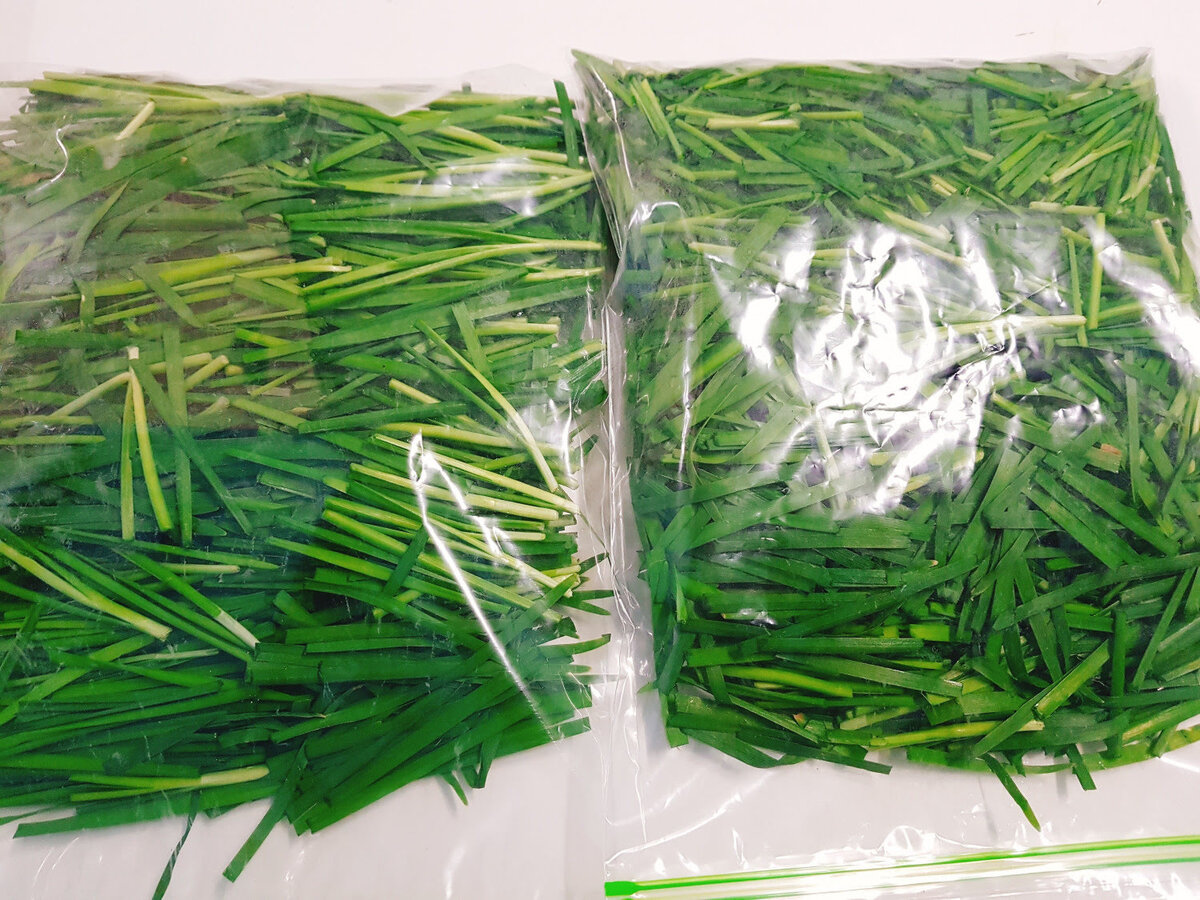
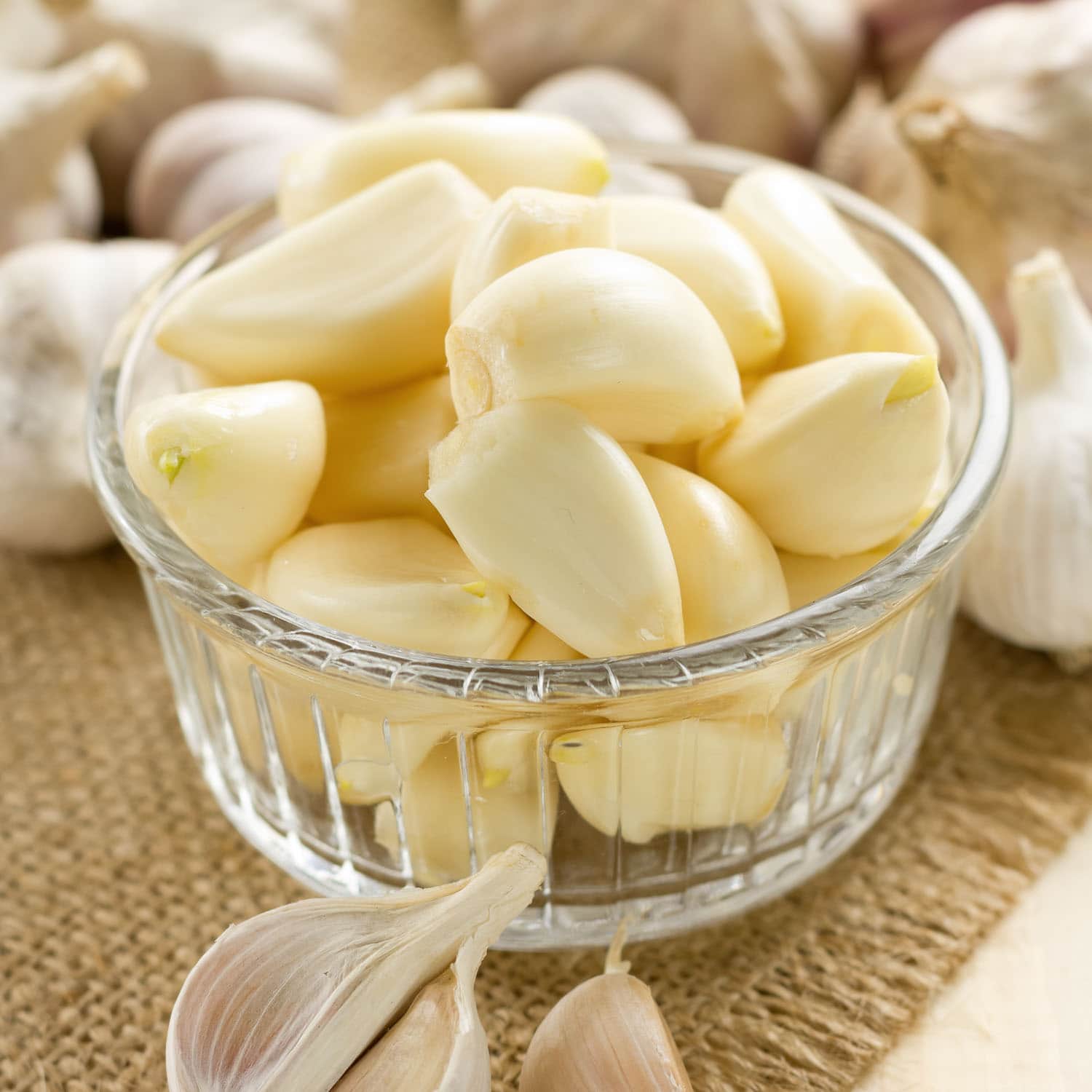
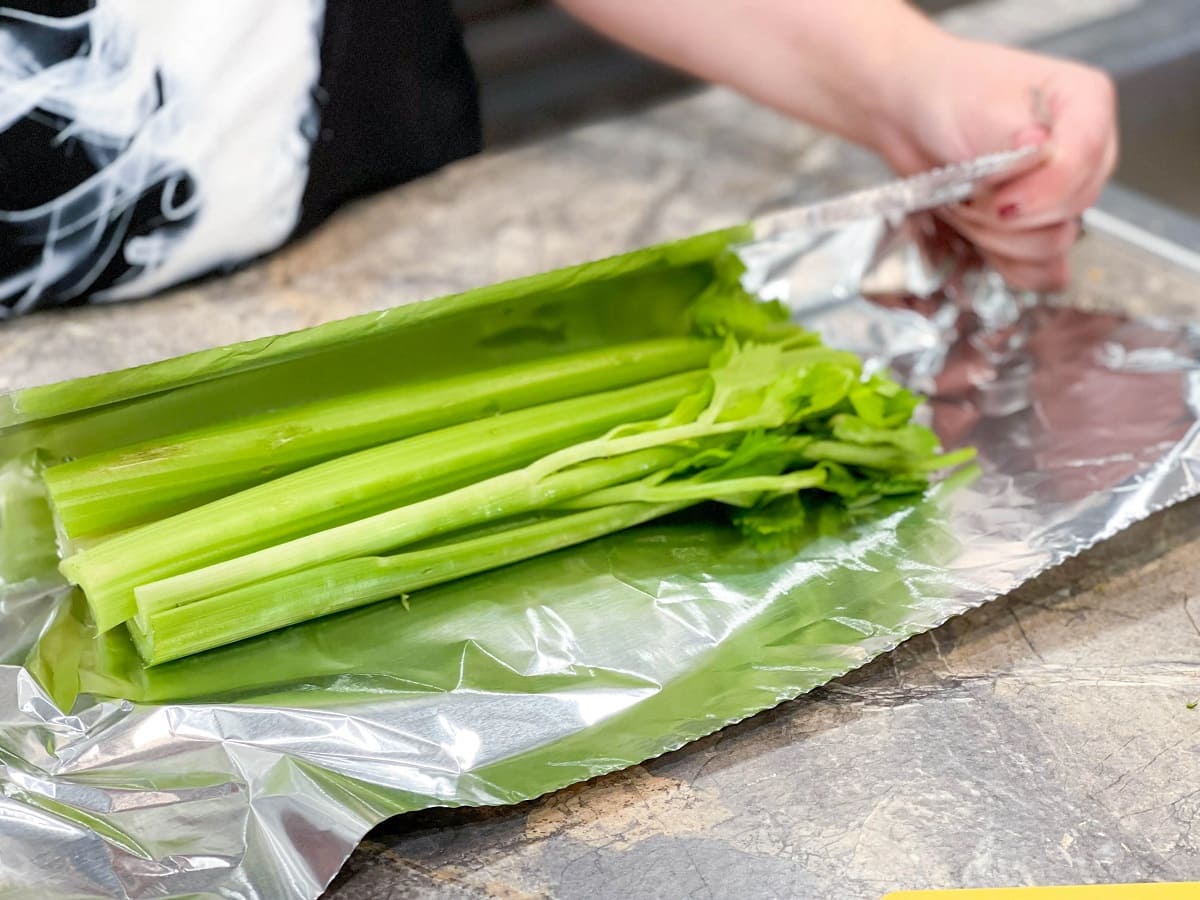
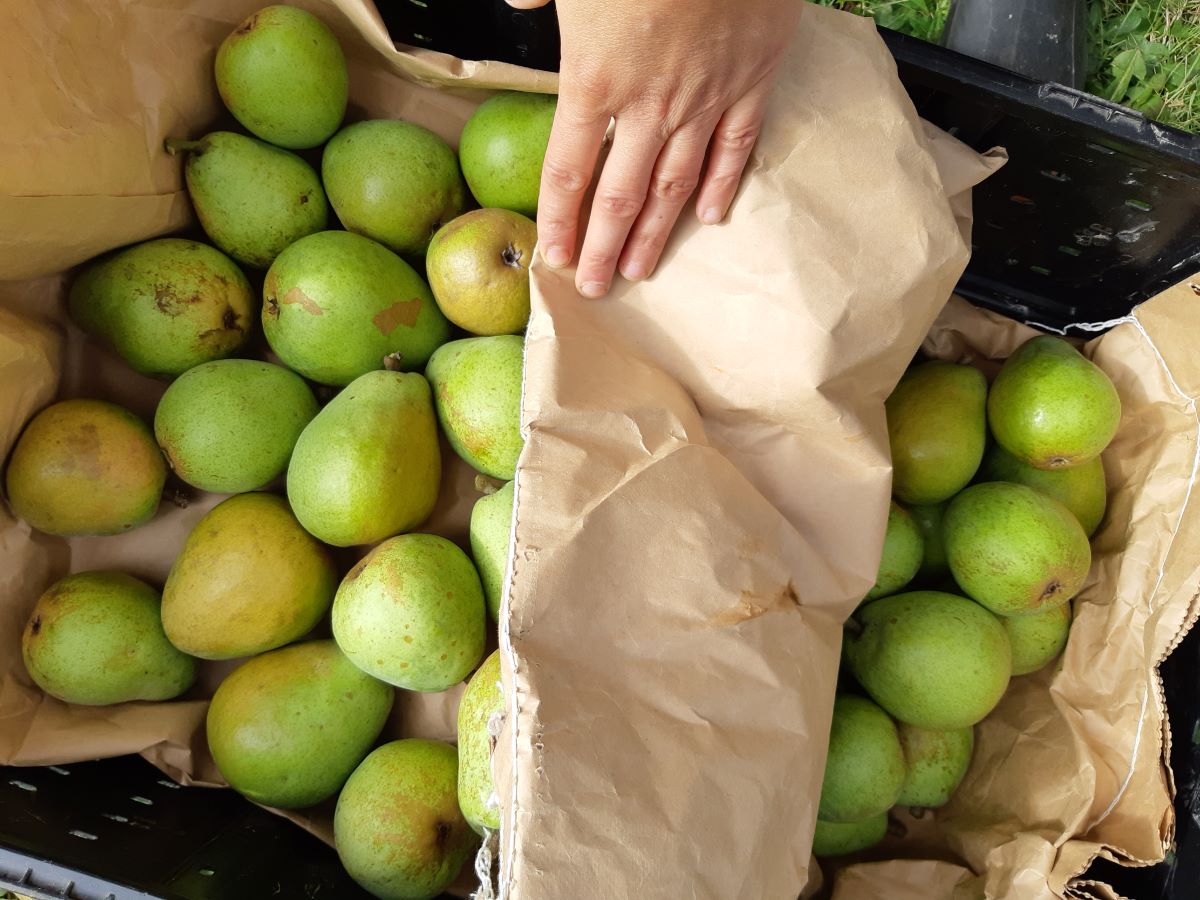
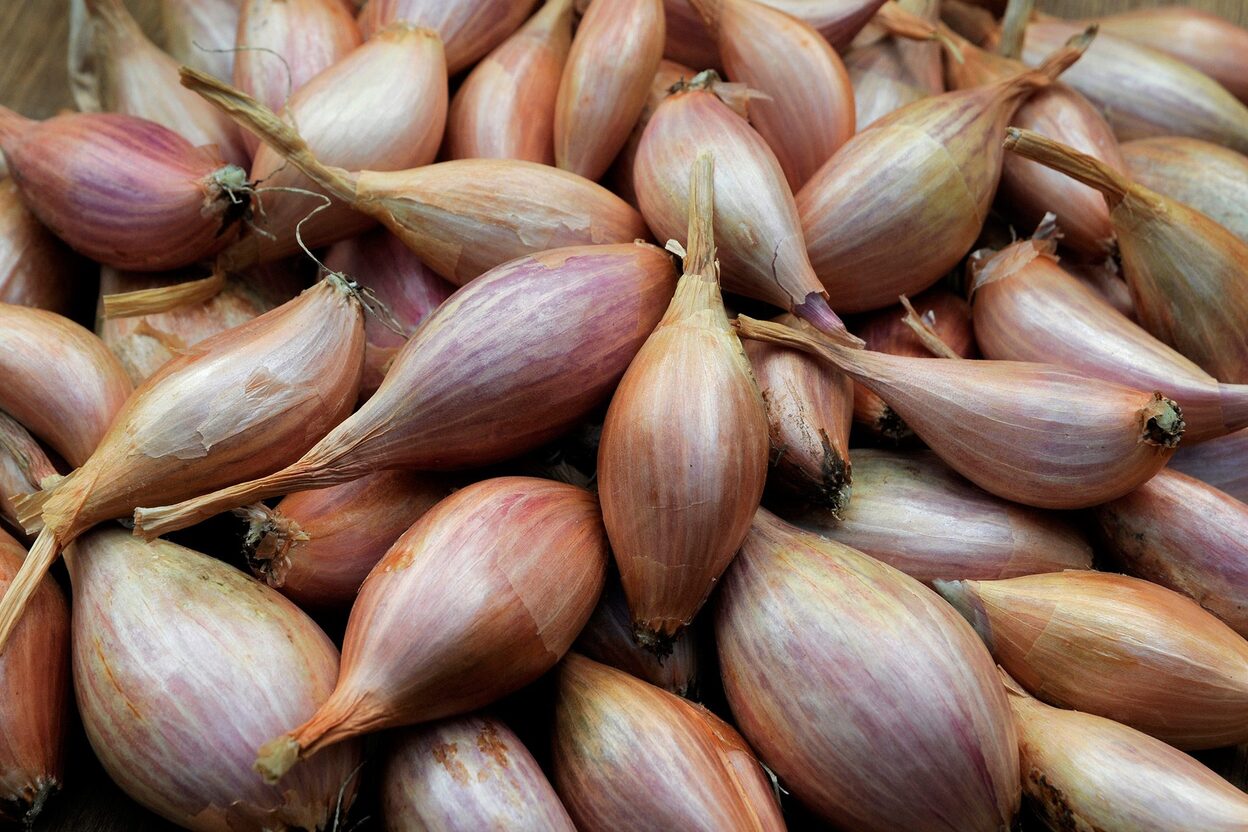
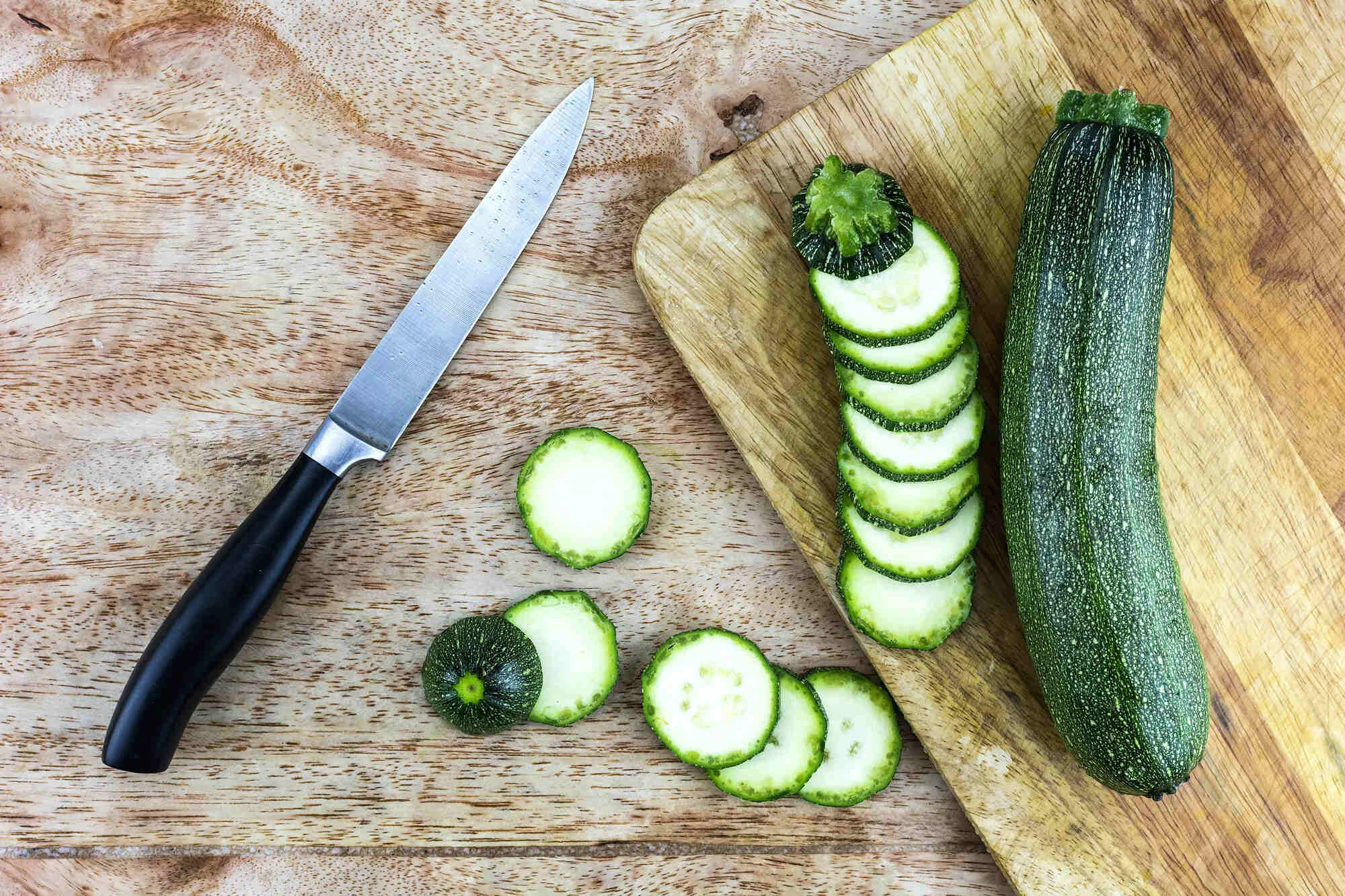






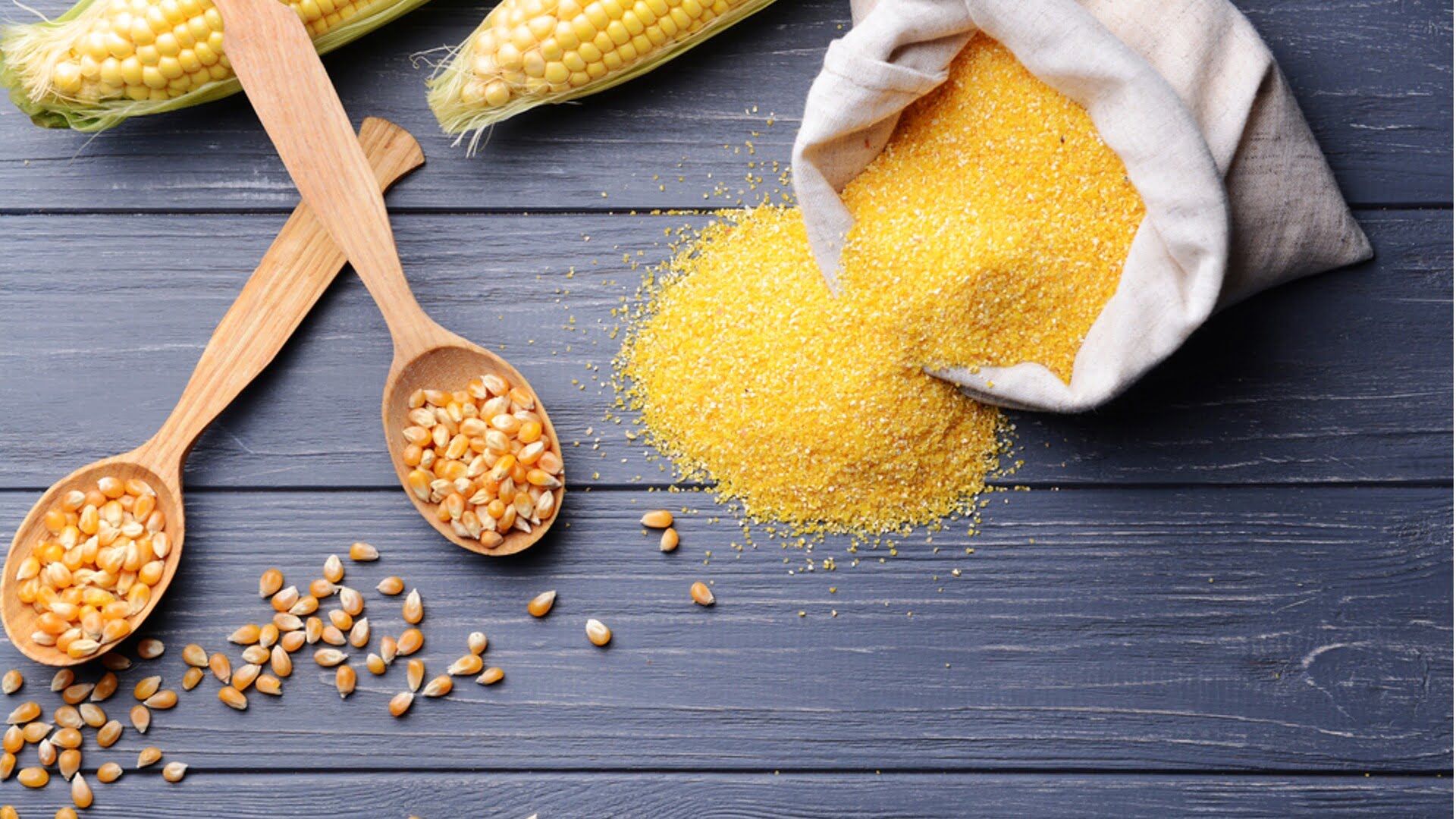

0 thoughts on “How To Store Vegetable Seeds Long Term”